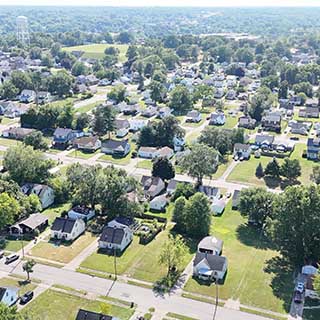To address the gap in market knowledge in Youngstown and surrounding communities that form Youngstown’s laborshed (economic region), YNDC and partners will develop a customized data-driven model to determine the market viability of residential development. This model will allow YNDC to confidently assess and invest in the local housing market, reducing reliance on external market analyses that are often inadequate in understanding local context and true demand. This model will incorporate variables such as the health of a neighborhood, property conditions and vacancy rates of existing housing stock, market draw, birth rates, population change, demographics, and traditional site selection factors like proximity to community assets. It will also take into account lifestyle preferences, aligning housing types with what residents actually want, rather than relying solely on income or household size metrics that currently drive subsidized affordable housing construction. This approach recognizes the need for housing choice and flexibility, including the potential to help validate and position YNDC into the development of larger, multifamily housing options.
This proposal builds upon YNDC’s previous technical assistance partnerships to build community development capacity with the Center for Applied GIS at Youngstown State University and Alan Mallach, Senior Fellow with the Center for Community Progress, who previously contributed to the development of the market segmentation model that drives neighborhood-by-neighborhood service deployment. Additionally, it will strengthen relationships with the City of Youngstown and Mahoning County Land Bank and other key stakeholders to support targeted infill development. By breaking down housing needs and demand with localized conditions, YNDC and its partners will be better able to target services, investment, and outreach, ensuring that new housing construction directly addresses real community needs, is financially sustainable, and contributes to long-term neighborhood stabilization and growth.

